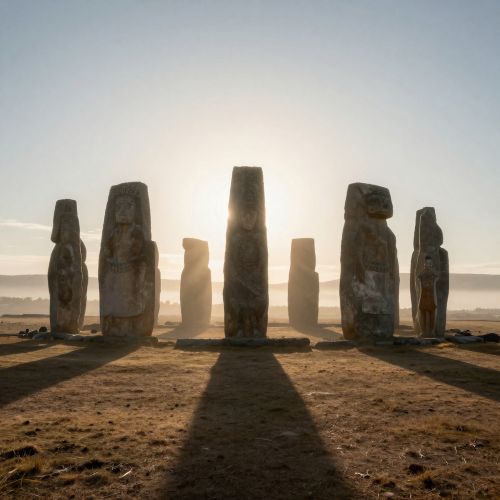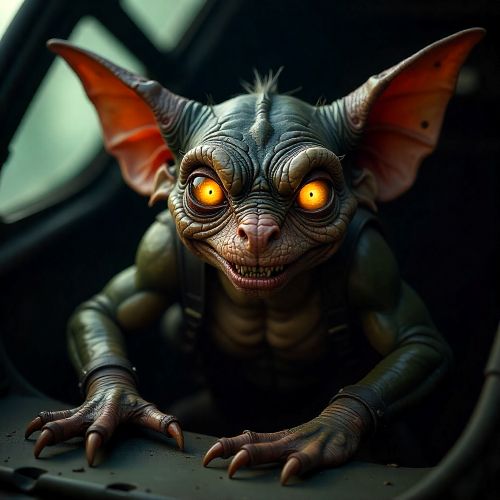Mngwa : The Giant Feline
Listen
At a glance
| Description | |
|---|---|
| Origin | Swahili Mythology |
| Classification | Animals |
| Family Members | N/A |
| Region | Tanzania |
| Associated With | Invisibility, Stealth |
Mngwa
Introduction
Deep within the coastal jungles of Tanzania, whispers of a shadowy predator have echoed through the generations. Known as the Mngwa, or “strange one” in Swahili, this legendary creature is more than just a tale to scare children—it’s a cryptid steeped in cultural lore, feared for its raw strength and elusive nature. While its existence remains unproven by science, the Mngwa lives on in the stories, fears, and fascination of those who share the land it supposedly prowls.
Among East Africa’s many mythical beasts, including the notorious Nandi bear, the Mngwa stands out not just for its terrifying reputation, but for the persistence with which people continue to report its appearances. Its legend is a chilling blend of the physical and the supernatural, straddling the line between predator and spirit.
Physical Traits
The Mngwa’s appearance is no ordinary beast’s. Those who claim to have seen it describe a feline of incredible size—larger than a lion but unlike any known African cat. Its fur is a striking grey, patterned with brindled stripes like a tabby, which helps it melt into the shadows of its forest home. This unique coloring, paired with its size, is what sets the Mngwa apart from leopards or lions in local eyes.
Even its footprints tell a strange story. Often mistaken for leopard tracks at first glance, they measure as large as a lion’s, suggesting a creature that defies classification. The Mngwa’s eyes are often described as glowing yellow in the dark, adding to its eerie presence, and its teeth and claws are said to be terrifyingly sharp—deadly tools for a nocturnal predator.
One of the most unsettling traits associated with the Mngwa is its sound—or rather, the lack of a roar. Witnesses insist that it purrs like a domestic cat, a sound all the more disturbing when produced by a beast capable of taking down livestock and humans alike. This quiet purring only adds to its ghostlike mystique.
Family
Unlike real animals, which can be placed within a scientific taxonomy, the Mngwa has no confirmed species or familial grouping. It is believed to be one-of-a-kind, though some tales connect it to a broader category of mythical African predators. Among them is the Nunda, another monstrous feline from Swahili lore that shares striking similarities.
The distinction between Mngwa and Nunda is often blurred, and in many traditional stories, the names are used interchangeably. The Nunda appears in the tale of Sultan Majnun, where it begins life as a pet cat and grows into a fearsome beast. While the two creatures may have different names and contexts, both embody a primal fear of the wild—a fear personified in the form of a seemingly unstoppable predator.
Some cryptozoologists speculate that these tales might stem from sightings of unusually large leopards or even unknown big cat species, perhaps relics of an ancient lineage long thought extinct. The African golden cat (Caracal aurata) is sometimes proposed as a relative due to shared features like the purring vocalization, but the size discrepancy makes this a stretch.
Other names
The name Mngwa emphasizes the creature’s strangeness, but the alternate name Nunda carries its own weight in Swahili culture. Translated, Nunda can mean “fierce beast,” “burden,” or even “cruel man,” reflecting the creature’s duality as both a literal predator and a symbolic representation of savagery or punishment.
In folktales, the Nunda is often more than a mere animal; it is a moral lesson given form. A pet gone wild, a symbol of unchecked growth, or the embodiment of a person’s sins—it serves as a reminder of the dangers that lurk when natural balance is disturbed. These layered meanings elevate the Mngwa from monster to metaphor, cementing its place in the mythological landscape of East Africa.
Powers and Abilities
Stories about the Mngwa don’t stop at its physical form. It is said to possess supernatural abilities that make it nearly impossible to trap or kill. Chief among these is its uncanny stealth. Despite its size, it moves without sound, slipping past guards and into villages like a wraith. Victims are often found after the fact, with little to no sign of a struggle—a testament to the Mngwa’s lethal precision.
Some legends suggest that the Mngwa can disappear at will, a power that explains why attempts to capture or kill it have failed throughout history. Whether this vanishing act is due to magical ability or masterful camouflage is up for debate, but the result is the same: the beast remains unseen until it strikes.
It’s also believed to have the power of mimicry. According to certain tales, the Mngwa can imitate sounds—like the cries of animals or even humans—to lure prey into its reach. Whether this is a natural hunting tactic or a more mystical trait varies depending on the storyteller, but it adds another layer to its terrifying legend.
Modern Day Influence
In modern times, the Mngwa has transitioned from oral folklore into a broader cultural icon. Its story has been recorded by explorers, scholars, and folklorists like Edward Steere and Andrew Lang, whose collections helped bring Swahili tales to Western audiences in the 19th and early 20th centuries. Thanks to their efforts, the Mngwa entered the global imagination as one of Africa’s great cryptids.
Today, the Mngwa finds itself woven into pop culture and fantasy media. In Harry Potter lore, a creature called the Nundu—clearly inspired by the Swahili beast—is portrayed as a massive, venomous feline so dangerous it takes multiple wizards to subdue. Tabletop games like Pathfinder also feature Mngwa-inspired creatures, often combining stealth and magic in their design.
These reimaginings introduce the Mngwa to new audiences while keeping its core essence alive: a powerful, unknowable force from the wilderness, feared and revered in equal measure. Meanwhile, cryptozoologists and adventurers continue to speculate on the possibility of a real animal behind the myth, drawing comparisons to the ongoing search for big cats in places they’re not expected to be.
Related Images
Source
Didymus, John Thomas. “Mngwa – Fairy Tales and Myths.” Retrieved from Fairy Tales and Myths.
Roussey, Benjamin. “The Mngwa Cat of Tanzania: The Mythology, Stories, And History.” Published May 17, 2022. Retrieved from Scary Studies.
Encyclopaedia of Cryptozoology. “Mngwa.” Retrieved from Cryptid Archives.
Contributors to Encyclopaedia of Cryptozoology. (2025). Mngwa | Encyclopaedia of Cryptozoology – Fandom. https://cryptidarchives.fandom.com/wiki/Mngwa
Contributors to Wikimedia projects. (2006). The Nunda, Eater of People – Wikipedia. https://en.wikipedia.org/wiki/The_Nunda,_Eater_of_People
Mngwa, an Eastern African Legend – HubPages. (2020). https://discover.hubpages.com/animals/Mngwa-an-Eastern-African-Legend
Frequently Asked Questions
What is lorem Ipsum?
I am text block. Click edit button to change this text. Lorem ipsum dolor sit amet, consectetur adipiscing elit. Ut elit tellus, luctus nec ullamcorper mattis, pulvinar dapibus leo.
What is lorem Ipsum?
I am text block. Click edit button to change this text. Lorem ipsum dolor sit amet, consectetur adipiscing elit. Ut elit tellus, luctus nec ullamcorper mattis, pulvinar dapibus leo.
What is lorem Ipsum?
I am text block. Click edit button to change this text. Lorem ipsum dolor sit amet, consectetur adipiscing elit. Ut elit tellus, luctus nec ullamcorper mattis, pulvinar dapibus leo.
What is lorem Ipsum?
I am text block. Click edit button to change this text. Lorem ipsum dolor sit amet, consectetur adipiscing elit. Ut elit tellus, luctus nec ullamcorper mattis, pulvinar dapibus leo.
What is lorem Ipsum?
I am text block. Click edit button to change this text. Lorem ipsum dolor sit amet, consectetur adipiscing elit. Ut elit tellus, luctus nec ullamcorper mattis, pulvinar dapibus leo.







